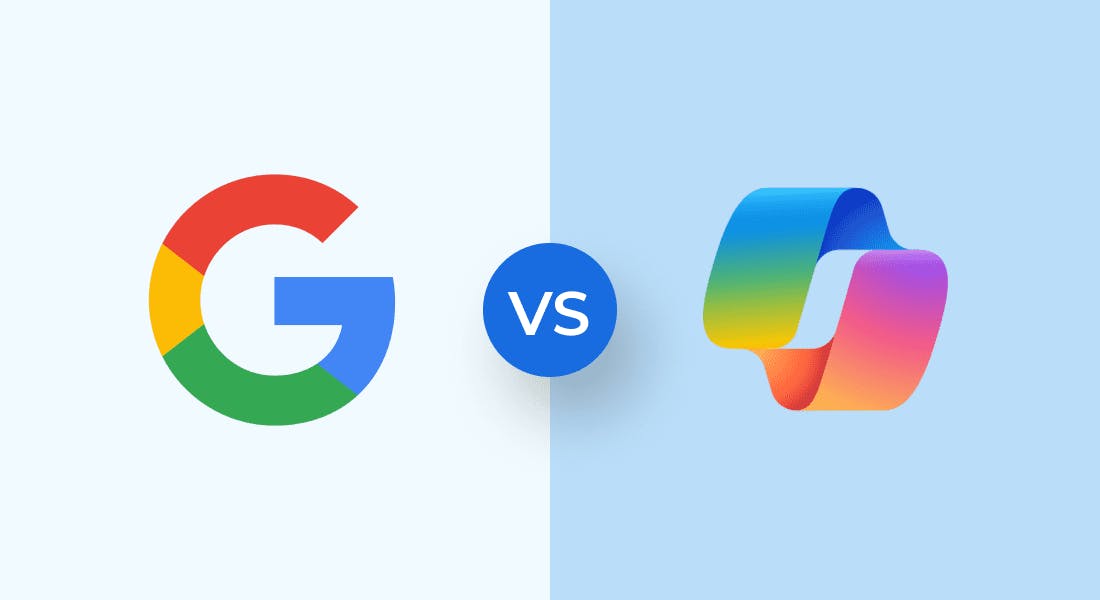Choosing Your Suite: Microsoft 365 vs Google Workspace

For most Australian small to medium businesses (SMBs), the choice between Microsoft 365 and Google Workspace isnt just about picking a product—its a decision that shapes your teams entire workflow. Its a decision as fundamental as choosing the engine for your business. Both platforms are titans of the productivity world, offering powerful tools for communication, collaboration, and getting things done. But heres the kicker: they're designed for fundamentally different ways of working. One is a powerhouse of familiar, installed software; the other is a streamlined, cloud-native innovator.
This isnt just another dry comparison of features. Were going to dive into a comprehensive, data-backed guide to help you make an informed decision. Well explore the nuances, the hidden costs, and the surprising advantages of each suite to help you choose the solution that will truly empower your team, not hold it back.
Our main takeaway? For most Australian SMBs seeking robust desktop applications, advanced collaboration features, and built-in security, Microsoft 365 Business Standard delivers the best value at AU18.70 per user per month. However, for organisations that prioritise browser − based tools, flexible pooled storage, and seamless Gmail integration, Google Workspace Business Standard (AU20.16 per user per month) may just be the perfect fit.
1. Pricing: More Than Just a Number
When evaluating the cost of your productivity suite, its crucial to look beyond the sticker price. While both vendors offer tiered plans, a direct comparison of their core business offerings reveals a nuanced difference that impacts your budget in the long run.

Key takeaway: While Googles entry-level plan is slightly more expensive, Microsofts core and premium tiers are more competitively priced. Both vendors offer annual commitments for the best rates, with monthly billing available at a slightly higher cost. Remember to factor in GST, which is often not included in the listed prices, and the potential for reseller discounts. The total cost of ownership (TCO) also includes factors like IT support hours and employee training, which are often lower with more intuitive platforms.
2. Core Productivity Apps: Desktop Power vs. Cloud Simplicity
This is the heart of the debate and the point where youll know which platform is right for you. It all comes down to your teams preferred workflow and the specific tasks they need to accomplish every day.
Microsoft 365: The Powerhouse Microsoft 365 Business Standard is for the power user. It includes a complete suite of professional-grade desktop applications—Word, Excel, PowerPoint, and Outlook. These arent just scaled-down, web-based tools; they are the full, powerful programs that many businesses have used for decades. If your team lives and breathes in Excel spreadsheets with complex macros, pivot tables, and advanced data analysis, this is your platform. Likewise, a legal firm drafting complex contracts in Word, or a marketing team creating a professional-grade presentation in PowerPoint, will find the rich feature set and fine-tuned control of the desktop apps indispensable. The ability to work offline seamlessly is a significant advantage, especially for teams working remotely or with unreliable internet connections.
Google Workspace: The Agile Collaborator Google Workspace Business Standard is for the team player. Its core apps—Docs, Sheets, and Slides—are built from the ground up for the cloud. This means seamless, real-time collaboration is not just a feature; its the foundation of the entire user experience. Imagine a marketing team working on a campaign brief: multiple team members can co-edit a single document simultaneously, with every change instantly visible. Theres no need to save, attach, or worry about version control—every revision is saved automatically and can be reverted to at any time. This frictionless approach to collaboration makes Google Workspace the compelling choice for teams that prioritise speed, simplicity, and a browser-based workflow.
Key takeaway: The choice is simple: Do you need the heavy-duty, feature-rich desktop apps (Microsoft) for intricate, single-user tasks, or the lightweight, instant-collaboration tools (Google) for dynamic, simultaneous teamwork?
3. Collaboration & Communication: The Tools That Connect Us
Both suites are built for teamwork, but their approaches to collaboration differ. Microsoft offers a comprehensive, integrated ecosystem, while Google provides a suite of simpler, focused tools that work together effortlessly.
- File Sharing & Co-Authoring: Think of Microsofts approach like a structured office. You have a personal desk (OneDrive) for your files and shared project rooms (SharePoint) for the team. This model provides granular control and powerful site management for a more formal structure. Googles approach is more like a communal workspace. Its pooled storage model in Google Drive offers incredible flexibility. For a team of five on the Business Standard plan, you get a 10 TB storage pool to draw from, allowing for dynamic sharing of large project files like video edits or design assets without worrying about individual user limits.
- Meetings & Webinars: Microsoft Teams is more than just a meeting app; it’s a communication hub. It’s deeply integrated with your files and calendar, making it the central nervous system for your team. It also boasts a higher participant cap (300) and advanced features like webinars with registration, ideal for marketing events or company-wide town halls. Google Meet, by contrast, offers a simpler, cleaner interface perfect for quick, hassle-free meetings. Its excellent noise cancellation features are a standout, ensuring crystal-clear audio even in a noisy environment.
- Chat & Project Tools: Microsoft’s Teams is designed to be an all-in-one hub where you can chat, call, meet, and collaborate on documents. It also integrates with Planner and To Do for powerful, task-oriented project management. Googles ecosystem of Chat and Spaces offers a more conversational and fluid approach. Google Chat provides messaging, while Spaces acts as a dedicated space for group collaboration, embedding communication directly into your teams file spaces. The best choice here depends entirely on your teams preferred work style—structured and centralised (Microsoft) or fluid and conversational (Google).
4. Storage & Deployment: The Space to Grow
This is a crucial differentiator that often gets overlooked, but it can have a significant impact on how your team stores and accesses files.
- Microsoft 365: Dedicated Storage: Each user receives a dedicated 1 TB of OneDrive storage. This is a straightforward model that ensures every user has ample, personal space for their own files. It's clear and predictable. For a team of five, you have five individual 1 TB storage accounts.
- Google Workspace: Pooled Storage: The Business Standard plan provides a flexible 2 TB of pooled storage per user. This is a game-changer for businesses that handle large, collaborative projects. If you have five users, your organisation has a 10 TB pool. This means one user can consume 5 TB for a video project without impacting another users storage limits. This model is highly efficient for creative agencies, media production companies, and any business where some users handle large, shared files while others only need minimal storage.
5. Security & Compliance: Your Digital Fortress
For Australian businesses, data security is non-negotiable. While both platforms offer strong baseline security (like multi-factor authentication), they differ in their more advanced offerings and how they approach compliance.
- Microsoft 365 Business Premium is built on an enterprise-grade security framework. It adds advanced features like Defender for Office, which provides a layered defense against phishing, malware, and other threats. Intune offers comprehensive device management, allowing you to secure corporate data on employees personal devices and ensure compliance. Data Loss Prevention (DLP) policies can prevent sensitive information from being shared outside the company. Microsofts deep-seated history in the enterprise space gives it a robust, granular security toolkit that many SMBs will find essential.
- Google Workspace Business Plus also provides enhanced security with Google Vault for archiving and eDiscovery. This tool is crucial for legal holds and retaining data for compliance purposes. While powerful, many SMBs will find Microsofts higher-tier plans offer a more comprehensive and layered security toolkit, especially if they operate in industries with strict compliance requirements.
6. Ecosystem & Extensibility: Beyond the Basics
Your productivity suite should not exist in a vacuum. Its ability to integrate with the rest of your technology stack is paramount for building an efficient and automated business.
- Microsofts ecosystem is a major strength, especially for businesses with a Windows environment. Its deep integration with the Windows OS, Azure cloud services, and a vast network of third-party apps makes it a seamless fit for many organisations. The Power Platform, including Power Automate for building custom workflows and Power BI for data visualisation, allows businesses to extend the functionality of their core apps far beyond the basics.
- Googles ecosystem is built for the cloud, with extensive APIs for automation and seamless integration with Google Cloud Platform and other Google services like Google Ads and Analytics. If your business is already heavily invested in the Google ecosystem for marketing or analytics, this is a natural choice. Its open APIs make it highly flexible for custom development and connecting to a wide range of third-party tools.
7. Ease of Use & The Learning Curve
For a small business, a productivity suite is only valuable if your team actually uses it. The learning curve is a critical factor that can impact adoption and efficiency.
- Microsoft 365: Many users in Australia are already familiar with Word, Excel, and PowerPoint, making the transition to Microsoft 365 feel natural. However, the sheer number of apps and features can be overwhelming. The administration console and the various overlapping functionalities (e.g., Teams vs. SharePoint vs. OneDrive) can create a steeper learning curve for new IT administrators and users.
- Google Workspace: Googles apps are renowned for their clean, minimalist, and intuitive interface. Because they are browser-first, theres no software to install or update, and the user experience is consistent across devices and operating systems (Windows, Mac, Chromebooks). For teams that are new to cloud productivity, or a business that prioritises simplicity over an extensive feature set, Googles platform is much easier to adopt.
8. Customer Support & Service
When things go wrong, quick and reliable support is essential for an SMB. The support models of the two platforms differ.
- Microsoft: Microsoft offers support directly, but many SMBs rely on their IT managed service provider (MSP) or a certified Microsoft partner. This can be beneficial as you get personalised service from a local expert who understands your business, but it adds another layer to the process.
- Google: Google provides more direct, streamlined support through its online help centre and live chat/phone support. This can be faster for quick fixes, but some businesses may prefer the hands-on relationship with a local partner.
Recommendation: Making Your Final Choice
The decision comes down to your priorities and your teams workflow. Think of it this way: Microsoft is the seasoned professional; Google is the agile innovator.
Choose Microsoft 365 Business Standard if:
- Your team depends on the advanced capabilities and offline access of desktop apps like Excel and Outlook.
- You need robust meeting and webinar functionality with a higher participant cap.
- You are a Windows-based business or require deeper, enterprise-grade security and compliance features in the future.
- Your team values a familiar interface and is comfortable with a more feature-rich environment.
This is the most common and recommended choice for most Australian SMBs who need a reliable, all-in-one solution that provides a familiar and powerful set of tools.
Opt for Google Workspace Business Standard if:
- Your team is "browser-centric" and prefers working entirely in the cloud.
- You value a simple, straightforward interface and seamless real-time co-editing.
- Pooled storage is a more efficient model for your teams workflow (e.g., creative or media-heavy businesses).
- Your business already uses Gmail and other Google services and wants a seamless extension of that ecosystem.
By carefully considering these factors, you can confidently choose the platform that not only meets your current needs but also supports your business growth for years to come. Ultimately, the best choice is the one that empowers your team to do their best work.




